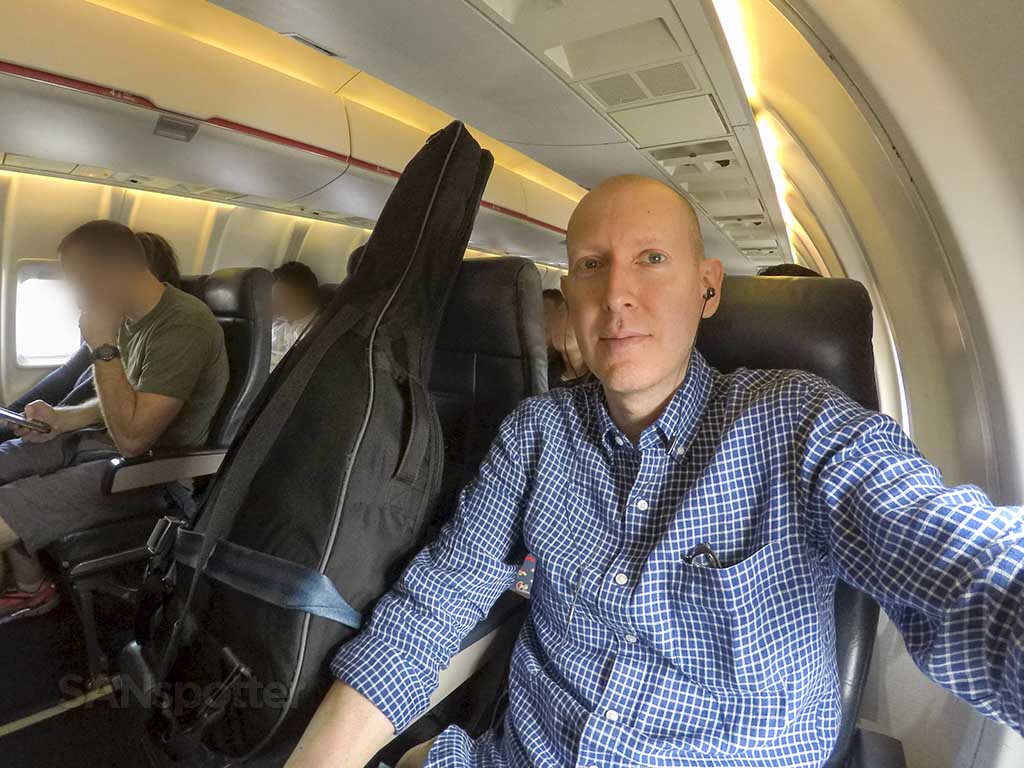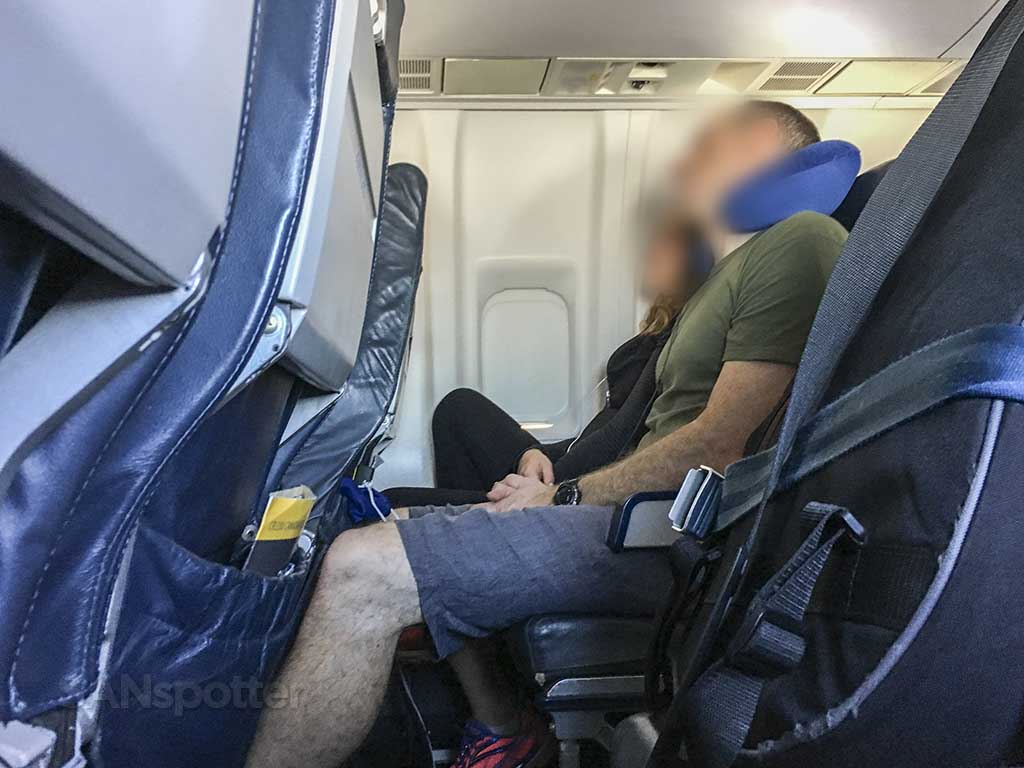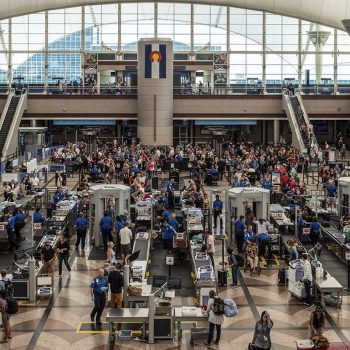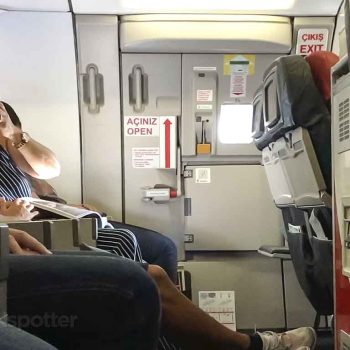Whether you’re a professional traveling to a gig, or an amateur who likes to play while on vacation, at some point you’ll likely need to bring your guitar on an airplane. Flying with a guitar can feel like a daunting experience. Is your guitar likely to suffer damage? Do airlines charge extra fees?
Fortunately, traveling on an airplane with a guitar is easier and more affordable than many people think. Federal law even provides specific protections for passengers with guitars.
My best piece of advice is to bring your guitar with you on the plane as a carry-on to lessen the chances of it being damaged or stolen. You might also want to consider loosening the strings before you board. This is just the tip of the iceberg though so, read on to learn everything you’ll need to know before you board.
First things first – is it even legal take a guitar on a plane?
Yes, it is legal, and you can bring a guitar on practically any commercial flight. According to a 2003 agreement between the Transportation Safety Administration and the American Federation of Musicians, airlines allow guitars as both carry-on and checked baggage.
It’s a really good thing that the TSA allows guitars as carry-ons. What the TSA does with confiscated items is sketchy. Long story short: if you have to hand over your guitar to the TSA, you’ll never see it again.

However, before arriving at the airport with your guitar in hand, check with your carrier regarding your specific flight. Also, when talking to a customer service rep, provide detailed measurements of both the guitar and its case.
How much does it cost to fly with a guitar?
Because a guitar is allowed as a carry-on, and most airlines allow you to bring one carry-on, the cost of bringing your instrument aboard should already be factored into the price of your ticket. So, flying with a guitar as a carry-on has no particular extra cost.
If you want to check your guitar as luggage, the cost will vary. Major airlines typically allow passengers one checked bag, with the option of paying extra for additional bags. The cost of checking a guitar is no different than any other piece of luggage. It’ll depend on the airline’s specific prices and how many other pieces of luggage you plan to bring.
Which airlines allow guitars as a carry-on?
All commercial airlines in the US allow you to bring a guitar as a carry-on, as established by federal law. The FAA Modernization and Reform Act of 2012 includes a clause designating a guitar as a carry-on. However, the guitar must meet the airline’s carry-on requirements, which generally means it must either fit into the overhead compartment or underneath a standard seat.
Bringing a guitar potentially becomes more complicated when flying on smaller, non-commercial planes (such as regional jets). Space is often limited on smaller planes, so you’ll want to check with the airline beforehand.

Can a guitar be checked baggage?
Yes, all major airlines allow you to check your guitar as luggage, providing it fits their standard size requirements for baggage. Contact your individual airline for details.
Generally, checking your guitar, instead of carrying it onboard, increases the risk of damage or theft. You’ll want to pack it in a hardshell case. Also, go directly to baggage claim after landing to reduce the chances of opportunistic theft.
5 tips for flying with a guitar (how to make it an easy and safe experience)
Airlines don’t always have a reputation for treating guitars well. In 2009, musician Dave Carroll created a viral hit, “United Breaks Guitars,” detailing how the carrier damaged his guitar and then spent months denying responsibility. The song struck a chord with many musicians, who shared similar experiences.
Fortunately, a few simple strategies can help ensure your guitar isn’t damaged in transit.
1. Carry your guitar on the plane
The best way to prevent theft and damage is to keep your guitar near you as much as possible. Instead of checking it, bring it onboard as your carry-on item. Carry it in a reinforced gig bag, which uses heavy-density foam panels to protect your instrument while remaining flexible enough to fit into the tight storage spaces of a plane.
When you first get on board, ask the attendant if you can place your guitar in one of the airplane’s closets, which are usually in first or business class. If closet space isn’t available, then you’ll need to put your guitar in the overhead bin.

2. Book nonstop flights
The less you have to move your guitar, the better. Try to book the most direct flight possible. You can store your guitar in the overhead or closet and then leave it alone until you arrive at your destination.
Booking a nonstop flight is especially important if you plan on checking the guitar as luggage. Each time the guitar is transferred between planes, the more likely damage can occur.
3. Book a separate ticket
If your guitar is expensive (or fragile), consider buying it a seat of its own. Many professional musicians purchase a separate ticket for their instrument. Although expensive, a separate seat provides the ultimate in protection when flying with a guitar because it never leaves your sight and can’t be crushed by other baggage.
4. Board early
When booking your ticket, try to sit in a section that boards early. For some airlines, that might mean sitting in the back of the plane. If you’re one of the first passengers to board, you have more storage options because the bins will mostly be empty.
5. Loosen the guitar’s strings
A common piece of advice you’ll hear when checking your guitar as luggage is to first loosen its strings. The idea is that changes in air pressure during the flight can cause strings to tighten and snap. While you likely won’t harm your guitar by loosening the strings, it’s usually not necessary.
Air pressure changes are unlikely to harm your guitar. After all, animals ride in the cargo compartment without any issue. Other pieces of luggage moving around the compartment are far more likely to cause damage, which is why you want to pack your guitar in a hard shell case if you plan on checking it.
5. Be polite
The majority of musicians who fly with a guitar encounter no problems. However, sometimes an airline employee or TSA agent might give you a hassle. They might request to inspect your guitar case or challenge your right to bring it on the plane.
While these situations are often irritating, try to always maintain your composure. If necessary, explain that you’re legally allowed to bring a guitar as a carry-on. You might want to bookmark the law on your phone so you can quickly show it to anyone if necessary.




